Fact file:
Matriculated: 1908
Born: 2 May 1888
Died: 27 March 1916
Regiment: Royal Field Artillery
Grave/Memorial: Ypres Menin Gate Memorial: Panels 5 and 9
Family background
b. 2 May 1888 at Wentworth, New South Wales, Australia, as the third son and third child of Daniel Henry Cashel Cudmore (1844–1913) and his second wife, Martha Earle Cudmore (née McCracken) (1855–1938) (m. 1882). Milo Massey also had five older half-siblings from his father’s first marriage. The family’s addresses included Glen Osmond (a suburb of Adelaide), “Avoca” station, near Wentworth, New South Wales, and “Adare Castle”, 300 yards from the beach in Victor Harbor (due south of Adelaide on the Fleurieu Peninsula), South Australia (now a United Church Conference Centre). Besides “Adare Castle”, the family owned four other great houses: “Tara”, “Claremont”, “Paringa Hall” and “Popiltah”.
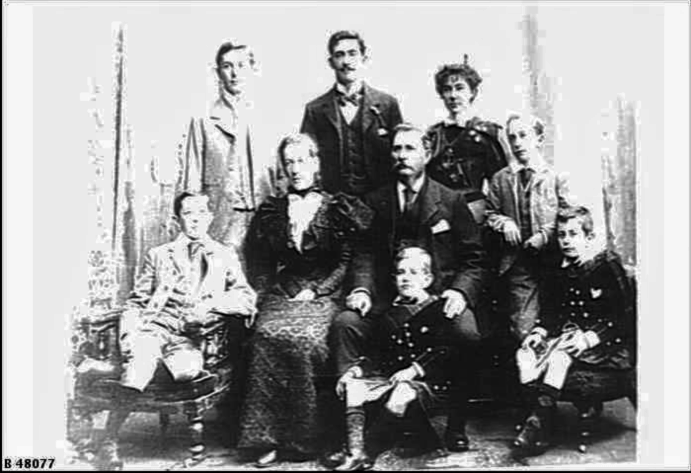
The Cudmore family at “Adare Castle” (c.1900)
(Courtesy of the State Library of South Australia: B48077)
Back row from left to right: Roland Herbert, Henry Carrington, Mary Avoca, Paul Russell Thomas; front row from left to right: Collier Robert, Martha and Daniel
Henry Cashel, Milo Massey (on the low chair), Daniel Wolseley (between his father’s knees)
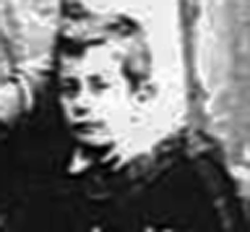
Milo Massey, detail from the above photo
Parents and antecedents
Milo Massey’s father was a second-generation immigrant to Australia of Irish descent who, like his father Daniel Michael Paul Cudmore (1811–91), became a successful pastoralist and businessman in Queensland and New South Wales, not least because of his fascination with farming technology.
Milo Massey’s mother was the daughter of Peter McCracken (1818–92) who arrived in Australia in 1842 on the Nimrod from Liverpool. He became a prosperous farmer and by 1852 he was the president of the Port Phillip (Melbourne) Farmer’s Society. He was also involved in brewing and railways. When he died he left £336,000.
Siblings and their families
Milo Massey was the half-brother, by Daniel Henry Cudmore’s first wife, Harriett Garrett (née Smedley; 1845–79) (m. 1872), of:
(1) Henry Carrington (1872–1950);
(2) Mary Avoca (“Minnie”) (b. 1874, d. after 1949, probably in Wilmot, Tasmania); later Smith after her marriage in 1906 to James Milroy Smith (1868–1942);
(3) Lillian Rosa (1876–77);
(4) Milo Frank (1877–81);
(5) Roland Herbert (1879–1913); married (1907) Annie Isabella Porter (1880–1939); three children.
He was the brother of:
(1) Paul Russell Thomas (1883–1969);
(2) Collier Robert (later Sir) (1885–1971); married (1922) Phyllis Miriam Wigg (1892–1964); three children;
(3) Daniel Wolseley (1889–1903).
Roland Herbert Cudmore served as a Lieutenant in the 5th South Australian Bushman Contingent (Imperial Contingent) in the Second Boer War (1899–1902) and was wounded.
Collier Robert Cudmore was educated at Magdalen from 1905 to 1909, where he proved to be an outstanding oarsman but obtained only a Pass Degree. At the Henley Regatta of 1907, together with James Angus Gillan (1885–1981; Magdalen 1905–09), D. Mackinnon, and J.R. Somers-Smith, their Magdalen Second Four won the Wyfold Cup and then the Visitors’ Cup. Collier Robert rowed for Oxford University in 1908, but when he was dropped from the Trial Eight for the 1908 Olympics, his Magdalen IV from the previous year was entered for the Stewards’ and the Visitors’ Cups for a second time, and they won both races in record time. This performance led the Olympic Committee to invite the Magdalen IV to be the second England IV at the 1908 Olympics – which was rowed at Henley over a course extended to one and a half miles. The Magdalen IV beat Leander in the Final and won the Olympic gold. In spring 1909, Collier Robert won his second Blue when his crew, which included A.G. Kirby, D. Mackinnon, and four other Magdalen men, won a resounding victory over Cambridge. Together with Somers-Smith, Kirby and C.A. Gold, the cousin of the distinguished oarsman Harcourt Gilbey (later Sir) Gold (1876–1952) (see G.S. Maclagan), he took his BA in November 1909. During World War One he served from October 1915 to September 1918 as a Lieutenant in the Royal Field Artillery, and was severely wounded on two occasions – in July 1916 and September 1918. After the war he became a distinguished lawyer and Liberal Conservative politician in South Australia, and he was knighted in 1958.
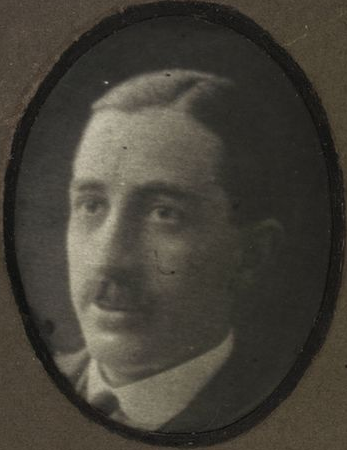
Collier Robert Cudmore, c.1915
Education
Milo Massey Cudmore was educated at St Peter’s College, Adelaide, Australia, from 1897 to the end of 1906, where, thanks to the training given by Canon M.A. Girdlestone, he, like his elder brother, became a notable rower. He matriculated at Magdalen as a Commoner on 14 October 1908 and was awarded the Diploma in Forestry on 23 October 1908 alongside 13 other Magdalen men, four of whom would be killed in action (G.H. Morrison, G.B. Gilroy, G.W. Cattley and T.Z.D. Babington). He took Responsions in the Hilary Terms of 1908 and 1909, and passed the First Public Examination in October 1909 (the Preliminary Examination in Chemistry) and Michaelmas Term 1910. He then read for a Pass Degree (Groups A1 [Greek and/or Latin Literature/ Philosophy] and C1 [The Elements of Algebra and Geometric Trigonometry]) and in Trinity Term 1911 he was awarded a BA, which he took on 12 October 1911.
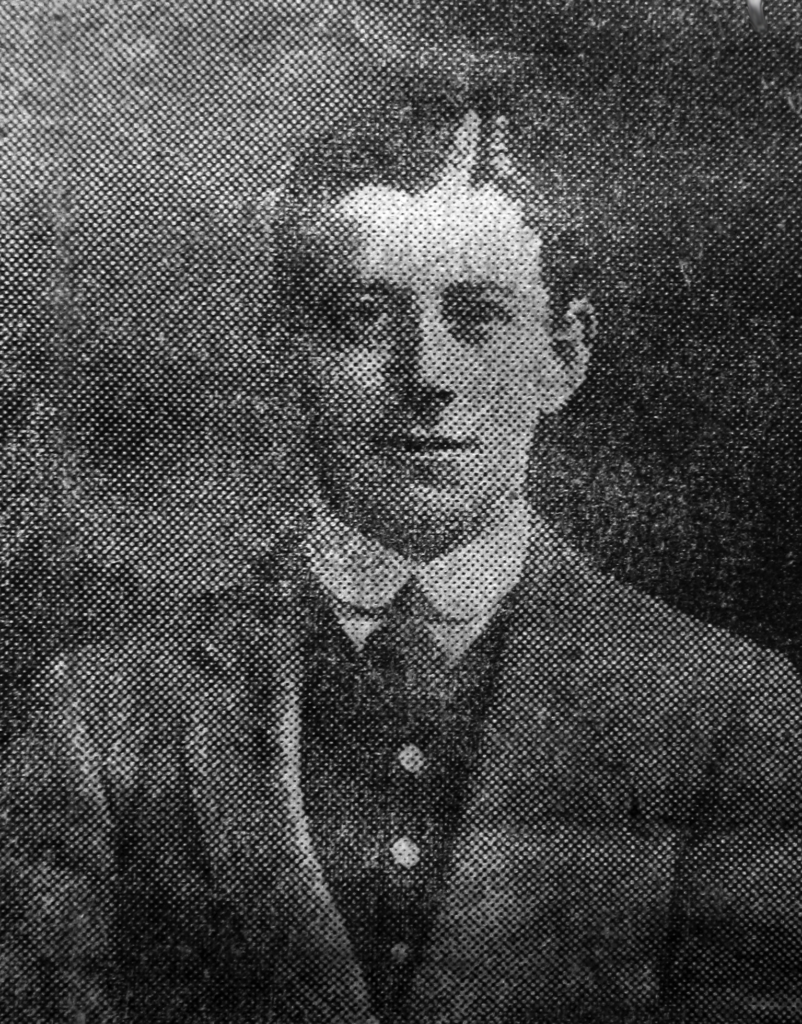
Milo Massey Cudmore, MA, MC
Although he did not match the rowing achievements of Collier Robert, while still in his first year he rowed in the 1909 Torpids with W.D. Nicholson. In July 1910 he rowed bow for the College VIII that had been coached by Harcourt Gilbey Gold and included Nicholson and D. Mackinnon, and they went Head of the River by beating New College after a gap of three years. Later on that summer, the same VIII became the first college crew ever to win the Grand Challenge Cup, Henley’s most prestigious trophy, when it defeated a very powerful Leander crew, including the legendary Robert Croft (“Bob”) Bourne (1888–1938) of New College, the only man ever to stroke four winning Blue Boats for Oxford. Then, on the following day, the same crew won an easy victory over Jesus College, Cambridge. Of the victorious crew of nine, eight served in the field during the Great War and four were killed in action (Nicholson, V. Fleming, D. Mackinnon and Milo Massey himself). The ninth member, Eugen Millington-Drake (1889–1972), who would play a key role in the Battle of the River Plate in 1939, was precluded from active service because he could not be spared from the Diplomatic Service in South America. In October 1910, in the Oxford University Boat Club Fours, Cudmore and A.A. Steward rowed in Magdalen’s second IV. So Milo Massey, like Collier Robert before him, made a vital contribution to the achievements that constituted Magdalen’s first “Golden Age” of rowing (1907–11), and President Warren wrote of him posthumously:
Somewhat slight in appearance for the athlete that he was, he was singularly bright and alert, and deservedly popular. It is sad to think that he is the second now of the members of that Grand Challenge Boat [to be killed in action].
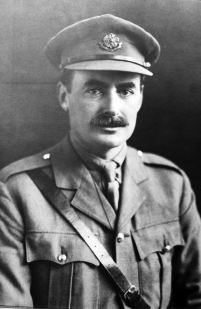
Milo Massey Cudmore, MA MC
(Photo Courtesy of Magdalen College, Oxford).
“Cudmore’s service, if brief, was brilliant. This will be no surprise to those who knew him either in Australia or at Magdalen, for to striking courage and dash he added much coolness and shrewdness and his death is a real loss to the Empire.”
Military and war service
During Cudmore’s time at Oxford, he was a Sergeant in King Edward’s Horse from March 1910 to 1 December 1911. This was a Territorial cavalry unit that had originally been founded as The King’s Overseas Dominions Regiment (Imperial Yeomanry) in 1901 and was renamed when it became part of the Territorial Force in 1908. Cudmore resigned at his own request, presumably when he returned to Australia. In 1913 he was a station hand on Elderslie Station, near Winton, Queensland, and he was probably still there when war broke out. But in December 1914 he returned to England on the SS Orsova (1909; scrapped 1936; cf. E.G.R. Romanes), and after disembarking on 2 January 1915, he immediately joined an Officers’ Training Corps.
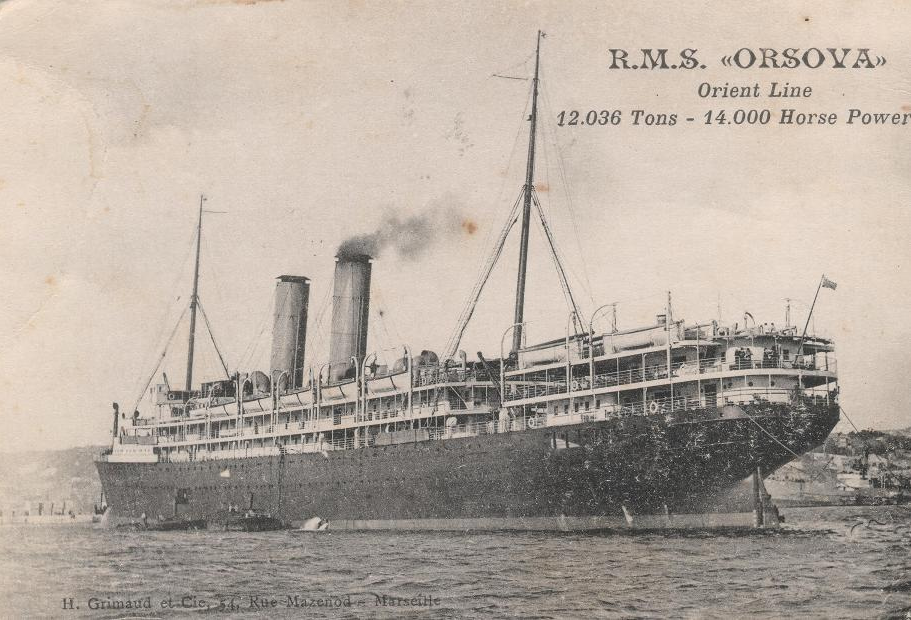
RMS Orsova (1909; scrapped 1936)
Ten days later he was commissioned Second Lieutenant in the Royal Field Artillery (RFA), and shortly after he had arrived at the front – when the newly invented 3-inch Stokes mortar was playing an increasingly important role in trench warfare – he volunteered to work with trench mortars, the largest of which could fire 60 lb projectiles. Whereupon he was attached to the 24th Trench Mortar Battery and also became the 3rd Division’s Trench Mortar Officer. Cudmore took part in the Second Battle of Ypres (22 April to 25 May 1915), and after his death a fellow officer, Captain George Osbert Stirling Smyth (1890–1920) of the RFA, wrote to his mother that the successful fire of the 19th Brigade during that battle “was in no small measure due to [Cudmore’s] gallantry and skill in keeping the telephone wires and telephonists going”. Cudmore was wounded in the left arm on 12 August 1915, recovered, was promoted Lieutenant on 1 January 1916, and returned to the trenches as an officer in the 31st Trench Mortar Battery. In late December 1915 he was mentioned in dispatches (London Gazette, no. 29,422, 31 December 1915, p. 16) and on 14 January 1916 he was awarded the MC “for general good service in the Field and not for any specific act of gallantry”.
On 2 March 1916, following several days of artillery barrages, the British 3rd and 17th Divisions retook the narrow ridge, about 12 metres high, on the northern bank of the Ypres–Comines Canal, which was known as “The Bluff” and which the Germans had captured in February. But when the 9th Brigade of the 3rd Division attacked at Sint Elooï, about three miles south of Ypres, on 27 March 1916 in order to straighten the line, Cudmore was killed in action, aged 28 (the date is given in his personal file). President Warren commented posthumously: Cudmore’s service “if brief, was brilliant. This will be no surprise to those who knew him either in Australia or at Magdalen, for to striking courage and dash he added much coolness and shrewdness”, and his death, Warren concluded, was “a real loss, it may be said without exaggeration […] to the Empire”. Cudmore has no known grave. He is commemorated on Panels 5 and 9 of Ypres (Menin Gate) Memorial, also on the Lamp of Maintenance that was presented to the Victor Harbor branch of Toc H (Talbot House) (South Australia) by his brother Paul in 1939, and on the Honour Board for the fallen in the Memorial Hall there. Cudmore left £371 10s 9d.
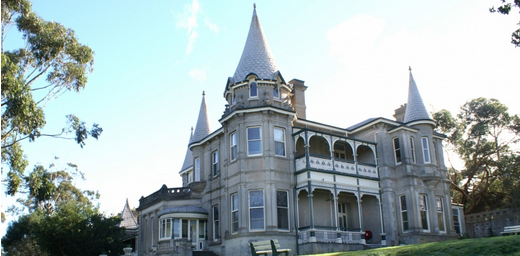
Adare Castle (completed 1893). It is furnished with rustic wooden floors, ornate fireplaces, sweeping staircases, high ceilings, extensive lead lighting, stained glass windows, and a grand ballroom with a unique skylight made from etched glass that was specially shipped from England.
Bibliography
For the books and archives referred to here in short form, refer to the Slow Dusk Bibliography and Archival Sources.
Printed sources:
[Anon.], ‘An Australian who won the Military Cross’ [obituary], The Times, no. 41,138 (11 April 1916), p. 10.
[Anon.], ‘University: Killed in Action: Oxford Rowing Blue’, The Oxford Chronicle, no. 4,207 (o.S.), no. 1,091 (n.S.) (14 April 1916), p. 7.
[Thomas Herbert Warren], ‘Oxford’s Sacrifice’ [obituary], The Oxford Magazine, 34, no. 17 (5 May 1916), p. 284.
Günther (1924), p. 468.
T.C. Borrow, The Cudmore Family in Australia (Adel, 1945).
P.A. Howell, ‘Cudmore, Daniel Henry (1844–1913)’, Australian Dictionary of Biography, 8 (1981), pp. 164–5.
P.A. Howell, ‘Cudmore, Sir Collier Robert (1885–1971)’, Australian Dictionary of Biography, 13 (1993), pp. 540–1.
Hutchins (1993), pp. 28–31 and plate 11.
Elsie Ritchie, For the Love of the Land: The History of the Cudmore Family (Ermington, New South Wales, 2000).
Blandford-Baker (2008), pp. 83, 92, 97–100, 295, 303.
Archival sources:
MCA: Ms. 876 (III), vol. 1.
OUA: UR 2/1/65.
WO95/2430.
On-line sources:
Anne Young, ‘Anne’s Family History (S is for St Eloi)’: http://ayfamilyhistory.blogspot.com/2015_04_01_archive.html (accessed 12 December 2018).
